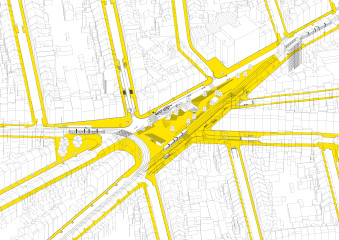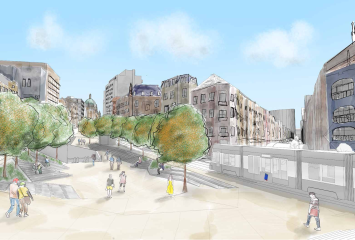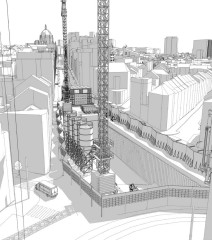My focus for this dissertation is Place Liedts. A quare with many stakeholders and actors that is about to experience serious redevelopment in the form of the introduction of a new metroline that will run from south (Albert) to the North (Bordet) of Brussels. This process is likely to induce trauma in the neighborhoods involved and adequate urban strategies need to be thought of to minimize the impact.
The primary objective for a successful construction site is cooperation and communication between the different stakeholders. My project aims to introduce a commons platform that allows for cooperation and synergistic activities so that any involved stakeholder can identify with their changing environment and commercial activities do not suffer to the point of bankruptcy. This includes inhabitants amongst others. The result is a draft proposal for multiple approaches that directly respond to the different types of situations that might occur during construction.
The strategy of this plan to identify many socio spatial, sonic, educational and restaurative potentials of a construction site. To break free from the current no-man’s-land paradigm associated with construction sites and look at how construction sites in public space can be exploited to benefit a neighborhood on the short term. The introduction of a new metro line is undoubtedly one of the most invasive public infrastructure works. According to the current planning (November 2018) it is said to take a decade to complete. It is unsure if there will be delays. It is clear that this square is now a hub but a ten-year span might actually relocate this hub temporarily and disrupt the local economy. The construction site poses a real threat to the vibrant Place Liedts. It is of primary interest that this in- between phase is addressed thoroughly to provide remedies on the short term. Both for social, health and economic purposes. In this project I also critically evaluate the redesigned square and test its acoustic performance against current conditions using recordings for the current situation and simulations for the future square. Based on earlier research I provide some strategies to create a more healthy and interesting soundscape in this new square.





